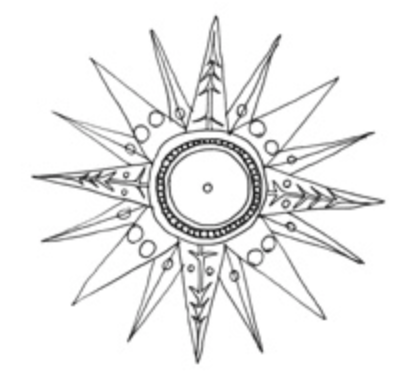WHICH SIDE OF THE STOPPING FINGER?
▶︎Calculating the pitch of the string plucked/struck/bowed between the stopping finger and bridge or ‘behind’ the stopping finger
The stopped string is usually plucked/struck/bowed between stopping finger and bridge. In some cases, the cellist plucks/strikes/bows the string ‘behind’ the stopping finger, between finger and nut. The factor to consider when calculating finger-nut pitch is that the portion of string under the stopping finger does not vibrate. Therefore, the string vibrates between the nut-edge of the stopping finger and nut. For a fixed finger position, if the finger-bridge pitch is ‘in tune’, the finger-nut pitch will be slightly sharp. The respective string lengths are shown in the following picture.

▷IN CONTEXT
for example
The finger is at the mid point of the string for the second harmonic. If the finger were to stay in this position and press to the fingerboard, the two lengths of string either side of the finger would be equal, slightly sharper than an octave above the open string. If the finger moves towards the nut so that the finger-bridge pitch is an ‘in tune’ octave, the finger-nut pitch will be even sharper still.
another example
In the figure below, the A string is stopped at 2/3 of its length, producing an E4. The remaining portion of string is 1/3 of the total length and half of the finger-bridge length, which corresponds to an E5 one octave higher. However, keeping the stopping finger in the same position and exciting the string behind it produces a sharp E5 because, taking finger width into account, the string length is slightly less than half of the stopped string length. Clearly this sharpness varies from cellist to cellist, from finger to finger (the wider the finger, the sharper the tone). Moreover, since the width of a finger is constant, the degree of sharpness is more extreme for relatively shorter string lengths from finger-nut. Therefore, the high E5 in the above example is sharper than the sharp A4 in the example above.

▷THE SOUND QUALITY OF FINGER-NUT TONES
For similar string lengths, finger-to-nut vibration is slightly less overtone rich, quieter and faster to decay than finger-to-bridge vibration.
▷ACOUSTICAL INFORMATION
Vibration between stopping finger and nut is quieter and decays faster than stopping finger-bridge excitation because the nut is less efficient than the bridge at transferring energy to the cello body; relatively more energy is lost through damping in the air or non-amplifying parts of the body (e.g., the fingerboard). In general, energy that is lost through damping inhibits the amplitude and decay-duration of higher partials more than those of lower partials. Consequently, for fixed contact points, stopping finger-nut excitation has a more sul tasto quality than stopping finger-bridge.
▷HINTS, TIPS AND EXTRA BITS
- The way that cellists visualise intonation can be misleading when calculating the pitch of the string ‘behind’ the stopping finger.
As a technical aid, cellists often ‘visualise’ good intonation by imagining that the middle of the stopping finger is at the ‘centre’ of a pitch. In fact, the bridge-edge of the stopping finger is exactly at the node’s centre. This slight inaccuracy becomes significant when calculating the pitch of the string behind the stopping finger. In the picture below, the finger is stopping the string at its mid point so that the finger-bridge length vibrates an octave above the open string. However, the finger-nut pitch is slightly higher than this because the nut edge of the stopping finger is closer to the nut by one finger width.
- This also has implications in comparing finger positions for stopped pitches and harmonics.
When playing harmonics, the centre of the finger and the centre of the node are aligned. Therefore, when comparing harmonics to stopped string pitches, the cellist often has to compensate for the half finger width and adjust the expected finger position. Cello map link


